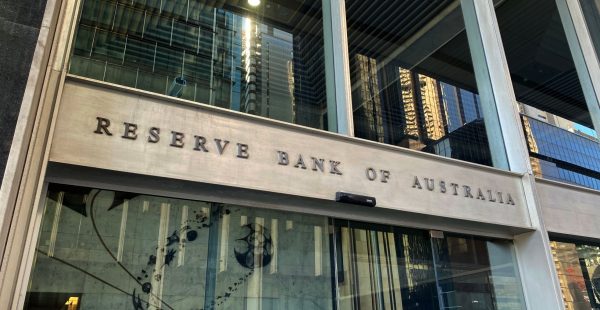Is the market getting ahead of itself amid RBA rate cut racket?

Industry players have reacted to the Reserve Bank of Australia’s (RBA’s) expected – albeit delayed – official cash rate reduction by 0.25 per cent, but showed some disagreement on the outlook for future cash rate cuts.
While most agreed that there was still room for at least one, if not more, further rate cut before the end of this year, one fund manager has warned that the market could be getting ahead of itself by pricing in additional rate cuts – given how wrong it was about last month’s shock hold.
“The impact of monetary policy is never cut and dried. Given there is plenty of strength in the economy already, we’d need to see how the existing rate cuts play out before factoring in any additional easing,” VanEck’s Head of Investments & Capital Markets, Russel Chesler, said.
“Too many rate cuts run the risk of increasing inflation and possibly over-heating the property market, making it harder for first home buyers. National dwelling values rose by 0.6% in July, making the sixth straight month of gains, with every capital city recording a rise in property prices for the month, according to the latest data from Cotality.
“There has also been growth in consumer spending, with the ABS reporting four straight quarters of volume growth in retail sales. This is supported by the annual earnings we’re seeing from several consumer discretionary companies in the current reporting season.
“It will be interesting to see how the unemployment data looks on Thursday. While the jump to 4.3% pushes unemployment out of the tight range it been stuck in, we would not be surprised to see it revert back to a number closer to the 4% mark.
“Until the unemployment rate starts trending higher, and the trimmed mean inflation gets closer to the 2% mark, we don’t see any cause to expect further rate cuts for this year.”
While some asset managers noted the RBA’s more “dovish” stance in its quarterly Statement of Monetary Policy, it wasn’t enough for others to fully dash hopes of further interest rate cuts this year.
“The RBA delivered its third 25bps cut in August, taking the cash rate to 3.6%. This is consistent with our view and in line with the market’s expectation,” Kellie Wood, Head of Fixed Income at Schroders, said.
“However, the latest round of forecasts in the Statement of Monetary Policy is more dovish than expected, with growth revised lower, and inflation to finally reach 2.5%, the middle of the target band, by December 2027. This is despite a steady unemployment rate of 4.3% over the projected horizon.
“We retain our view that the market is fully priced for the RBA’s easing cycle and prefer to be owing interest rate risk further out the curve.”
“It is now clear that the Board was waiting for the June quarter CPI figure before pulling trigger on further cash rate cuts,” Darryl Bruce, Executive Director Capital Markets at Income Asset Management, said.
“Both the headline CPI rate for the June quarter at 2.1%, and the trimmed mean at 2.7% came comfortably within the RBA’s target range. Cutting this month is also more consistent with the Board’s stated goal of cutting in a ‘cautious and gradual’ manner.
“Given that the decision was widely expected we have seen very little impact on the market thus far. Further cash rate cuts are anticipated later in the year but, as always, these will dependant on the economic dataflow in the coming months.”
Vanguard’s Senior Economist, Dr Grant Feng, noted the RBA’s shift to a more dovish outlook but suggested it wouldn’t put a complete stop to rate reductions.
“Despite progress on inflation, supply-side constraints remain a challenge. Productivity growth continues to lag, while robust wage increases have pushed unit labour costs to 5.1% YoY, well above levels consistent with the RBA’s inflation target. With the labour market still tight, upward pressure on costs is expected to persist, suggesting that the disinflation process will be gradual,” he said.
“Given these dynamics, we expect the RBA to maintain a cautiously dovish stance, with further rate cuts likely to be measured and incremental. Looking ahead, we expect the quarterly trimmed mean inflation to remain within the RBA’s target band, with further moderation as the effects of monetary easing filter through.
“With growth showing signs of recovery and the unemployment rate stabilising, the magnitude for additional rate cuts appears modest. On balance, we expect the combination of disinflation progress and supply-side constraints will result in the RBA undertaking a cautiously dovish stance, with further rate cuts to 3.35% by end of this year.”
Similar sentiments were echoed by HSBC’s Chief Economist, Australia, NZ & Global Commodities, Paul Bloxham.
“Our working assumption is that the RBA will be able to cut in Q4 2025 and Q1 2026, to 3.10%, as the global disinflation arrives. However, we see a risk that weak productivity and a strong rise in the domestic cost base in a fully employed economy, leaves domestic inflation too high to allow further rate cuts.
“The RBA’s statement has a working assumption that the cash rate will follow the market pricing pathway, with two-to-three more 25bp cuts factored in. However, as always, this is not a commitment from the RBA, just a working assumption.
“Our reading is that the commentary from the RBA today was fairly agnostic about whether there will be further cuts from here, with the central bank emphasising that it has considerable optionality.”
PIMCO’s Executive Vice President and Head of Australia Portfolio Management, Adam Bowe, cited the possibility of a “steeper rate-cutting cycle” given the impact of global trade policy uncertainty.
“Despite lowering the cash rate today monetary policy remains restrictive and this policy setting continues to weigh on growth and inflation. The RBA easing cycle is far from complete,” he said.
“With underlying inflation remaining within the RBAs target band of 2-3% for the past three quarters, the economy growing below trend, and rising global risks around geopolitics and trade, the time for restrictive monetary policy has now passed.
“Today’s meeting outcome is consistent with our medium term view that the RBA will continue to ease policy at a quarterly pace with a destination below 3% next year. The new RBA forecasts are now more consistent with that view.
“With inflation firmly within the RBA’s target band and expected to stay there, alongside a labour market that appears roughly balanced, we continue to anticipate the RBA will lower the cash rate toward neutral.
“Rising global trade barriers in addition to geopolitical tensions pose downside risks to regional growth, increasing risks of a steeper rate-cutting cycle by the RBA.”











CFS should be focused on fixing Edge. Not distractions like this.
In my opinion: Another attempt by 'friends of the party' to muddy the work of professional advisers. Trustee should not…
Industry Fund Super Fund Trustees along with the corrupt Treasury are again trying to carve themselves out from competition, and…
Will end up making it impossible for licensed advisers to provide advice with them being replaced by the Union influenced…
Collective charging = Commissions Treasury corruptly trying to find ways to justify HIDDEN COMMISSIONS charged to every super fund member.…